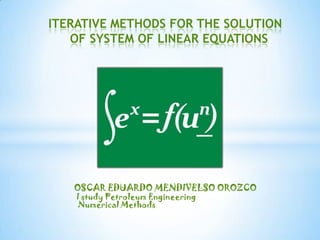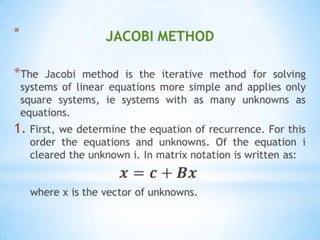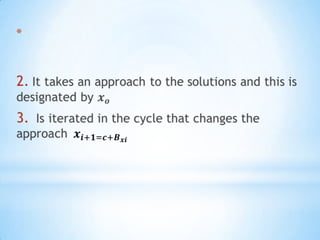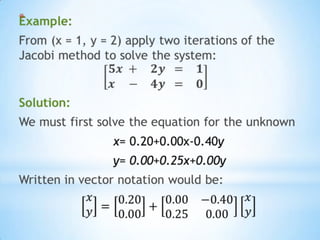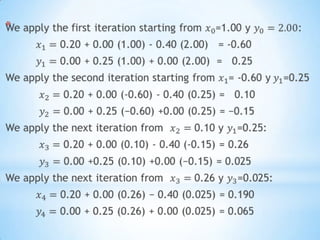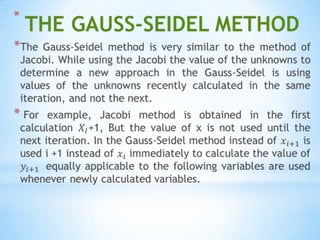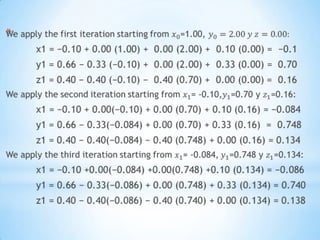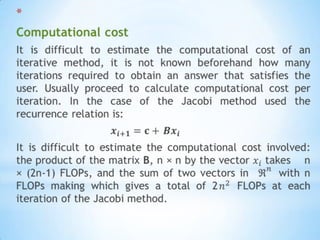The document discusses iterative methods for solving systems of linear equations, specifically the Jacobi and Gauss-Seidel methods. The Jacobi method updates each unknown using the previous values, while Gauss-Seidel uses the most recent values calculated in the current iteration. Both methods are demonstrated through examples. The computational cost of each iteration for Jacobi is 2n^2 FLOPs, where n is the number of equations. The total FLOPs for m iterations is 2mn^2.
